Minipress
"Trusted 1 mg minipress, hiv infection rate in india".
By: L. Rocko, M.B. B.CH., M.B.B.Ch., Ph.D.
Clinical Director, University of the Virgin Islands
Age particular aetiological agents of diarrhoea in hospitalized youngsters aged less than five years in Dar es Salaam hiv transmission statistics top bottom buy 2 mg minipress, Tanzania hiv infection rates sub saharan africa proven 1 mg minipress. Rates of antimicrobial resistance in Latin America (2004- 2007) and in vitro exercise of the glycylcycline tigecycline and of other antibiotics antiviral us release order minipress 1mg. Patrones de resistencia antimicrobiana en uropatogenos gramnegativos aislados de pacientes ambulatorios y hospitalizados Cartagena hiv infection numbers world proven minipress 1mg, 2005-2008. Antimicrobial resistance of Escherichia coli in Mexico: how serious is the problemfi Morfin-Otero R, Tinoco-Favila J, Sader H, Salcido-Gutierrez L, Perez-Gomez H, Gonzalez-Diaz E et al. Resistance trends in gram-adverse micro organism: surveillance results from two Mexican hospitals, 2005-2010. Phenotypic detection and prevalence of prolonged-spectrum beta-lactamases in scientific isolates of Klebsiella pneumoniae and Escherichia coli at a tertiary hospital in Trinidad & Tobago. Community acquired urinary tract infection and susceptibility profile of Escherichia coli to the primary antimicrobial agents. In vitro resistance to cephalosporins in women with bacterial urinary tract infections. Uropathogens and their susceptibility patterns in youngsters at Princess Rhmah Hospital, Jordan. Incidence, aetiology and resistance of late-onset neonatal sepsis: a five-12 months prospective examine. Etiology and antibiotic susceptibility patterns of community- and hospital-acquired urinary tract infections in a basic hospital in Kuwait. Escherichia coli isolated from urinary tract infections of Lebanese sufferers between 2000 and 2009: Epidemiology and profiles of resistance. A refiection on bacterial resistance to antimicrobial agents at a major tertiary care middle in Lebanon over a decade. Characterization of prolonged- spectrum fi-lactamase-producing Escherichia coli and Klebsiella pneumoniae isolates from the community in Morocco. Detection of AmpC beta lactamase in scientific isolates of Escheria coli amongst youngsters. An audit for microbiological surveillance and antimicrobial susceptibility within the intensive care unit. Evaluation of resistance to fuoroquinolones in scientific isolates of Escheria coli. Extended spectrum beta lactamases in urinary gram adverse bacilli and their susceptibility sample. Prevalence of antimicrobial resistance and integrons in Escherichia coli from Punjab, Pakistan. Multiple drug resistance patterns in numerous phylogenetic groups of uropathogenic E. Epidemiology of bacteraemia in Hamad basic hospital, Qatar: a one 12 months hospital-based examine. Prevalence and antimicrobial susceptibility of prolonged spectrum beta-lactamase-producing Escherichia coli and Klebsiella pneumoniae in a tertiary care hospital. Antimicrobial susceptibility sample of bacterial pathogens inflicting urinary tract infections in a Saudi Arabian hospital. Prevalence of antimicrobial resistance amongst gram-adverse isolates in an grownup intensive care unit at a tertiary care middle in Saudi Arabia. Antibiotic sensitivity sample of common community-acquired uropathogens in youngsters in a Saudi tertiary care hospital. Antimicrobial-resistant micro organism in a basic intensive care unit in Saudi Arabia. Antibiotic resistance sample and empirical therapy for urinary tract infections in youngsters. Increased multidrug resistant Escherichia coli from hospitals in Khartoum state, Sudan. Resistance trends and risk factors of prolonged spectrum fi-lactamases in Escherichia coli infections in Aleppo, Syria. Resistance patterns of bacterial isolates to antimicrobials from three hospitals within the United Arab Emirates. Prevalence and antimicrobial susceptibility sample of prolonged-spectrum beta-lactamase-producing Enterobacteriaceae within the United Arab Emirates. Antibiotic resistance of coliform micro organism from community-acquired urinary tract infections within the Zenica-Doboj Canton, Bosnia and Herzegovina. Epidemiology and susceptibility to antimicrobials in community, hospital and long-time period care facility bacteremia in northern Israel: a 6 12 months surveillance. Epidemiology of bacteremia episodes in a single middle: improve in Gram-adverse isolates, antibiotics resistance, and affected person age. Community-acquired sophisticated intra-belly infections in youngsters hospitalized throughout 1995-2004 at a paediatric surgical procedure division. Study of prolonged-spectrum (beta)-lactamase-producing micro organism from urinary tract infections in Bangladesh. Study of antimicrobial susceptibility of clinically signifcant microorganisms isolated from selected areas of Dhaka, Bangladesh. Antibiotic susceptibility patterns of uropathogens isolated from pediatric sufferers in a selected hospital of Bangladesh. A survey on antimicrobial sensitivity sample of diferent antibiotics on scientific isolates of Escherichia coli collected from Dhaka city, Bangladesh. A ten 12 months evaluation of multi-drug resistant blood stream infections attributable to Escherichia coli & Klebsiella pneumoniae in a tertiary care hospital. Symptomatic and asymptomatic urinary tract infection by Escherichia coli amongst pregnant women attending out affected person clinic of obstetrics and gynecology. Extended-spectrum beta-lactamase-producing Escherichia coli and Klebsiella pneumoniae in diabetic foot infections. Prevalence of prolonged-spectrum beta-lactamases amongst Escherichia coli and Klebsiella pneumoniae isolates in a tertiary care hospital. Prevalence of prolonged spectrum beta lactamase and AmpC beta lactamase producers amongst Escherichia coli isolates in a tertiary care hospital in Jaipur. Antimicrobial susceptibility profles of cardio and facultative Gram-adverse bacilli isolated from sufferers with intra-belly infections within the Asia-Pacifc area according to presently established susceptibility interpretive criteria. Antibiotic susceptibility of intra-belly infection isolates from Indian hospitals throughout 2008. The efiect of age on the micro organism isolated and the antibiotic-sensitivity sample in infections amongst most cancers sufferers. Antibiotic resistance sample amongst common bacterial uropathogens with a special reference to ciprofioxacin resistant Escherichia coli. Study of antimicrobial susceptibility sample of Escherichia coli isolated from scientific specimens in a Teaching Hospital, Pondicherry. High prevalence of prolonged-spectrum (beta)-lactamase-producing pathogens: Results of a surveillance examine in two hospitals in Ujjain, India. Increasing burden of hospital acquired infections: Resistance to cephalosporin antibiotics amongst klebsiella and Escherichia coli. Prevalence of bacteriuria in Jeyaseharan hospital of South India and their antibiogram. Changing trends of in vitro antimicrobial resistance patterns in blood isolates in a tertiary care hospital over a interval of four years. Antibacterial resistance and trend of urinary tract pathogens to commonly used antibiotics in Kashmir Valley. Trends in antimicrobial susceptibility of gram-adverse micro organism isolated from blood in Jakarta from 2002 to 2008. Surveillance and correlation of antibiotic prescription and resistance of Gram-adverse micro organism in Singaporean hospitals. Aetiology of community-acquired urinary tract infection and antimicrobial susceptibility patterns of uropathogens isolated. A survey of bacterial isolates cultured from apparently wholesome individuals in South Western Nigeria.

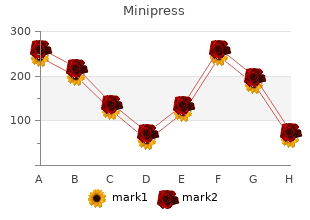
Isolated and smaller hospitals faced particular challenges sustaining the supplies they wanted and restocking rapidly once they ran out of supplies hiv infection time period effective minipress 1 mg. Hospitals reported an uncertain supply of ordinary hiv infection rates nz 2mg minipress, full-function ventilators and in some cases used alternatives to hiv infection statistics australia effective 2 mg minipress help patients hiv infection statistics in kenya safe minipress 1 mg, together with adapting anesthesia machines and utilizing single-use emergency transport ventilators. Hospitals anticipated that ventilator shortages would pose difficult choices about ethical allocation and liability, although on the time of our survey no hospital reported limiting ventilator use. Increased Costs and Decreased Revenue Hospitals described growing costs and decreasing revenues as a risk to their financial viability. Hospitals reported that ceasing elective procedures and different companies decreased revenues on the same time that their costs have elevated as they put together for a possible surge of patients. Many hospitals reported that their cash reserves had been rapidly depleting, which might disrupt ongoing hospital operations. Changing and Sometimes Inconsistent Guidance Hospitals reported that changing and sometimes inconsistent guidance from Federal, State, and local authorities posed challenges and confused hospitals and the public. Hospitals also reported considerations that public misinformation has elevated hospital workloads. Support Staff To help workers, some hospitals reported aiding workers to access companies corresponding to childcare, laundry, grocery companies, and hotel accommodations to promote separation from elderly relations. Manage Patient Flow and Hospital Capacity To handle affected person flow and hospital capacity, some hospitals had been offering ambulatory care for patients with much less extreme symptoms, providing telehealth companies when possible, and setting up alternate services corresponding to fairgrounds, vacant school dorms, and closed correctional services as further areas for affected person care. Secure Ventilators and Alternative Equipment to Support Patients In anticipation of elevated wants for ventilators, hospitals tried to get hold of further machines by renting ventilators, buying single-use emergency transport ventilators, or getting ventilators through an affiliated facility. Some hospitals reported changing different tools, corresponding to anesthesia machines, to use as ventilators. Testing, Supplies, and Equipment Many hospitals noted that they had been competing with different providers for limited supplies, and that government intervention and coordination might assist reconcile this downside nationally. Workforce Allocation Hospitals requested that government permit reassignment of licensed professionals and realignment of duties as wanted, present flexibility with respect to licensed professionals training throughout State traces, and supply relief from regulations which will restrict utilizing contracted workers or physicians primarily based on enterprise relationships. Capacity of Facilities Hospitals asked for relaxed guidelines round mattress designations, the ability to establish surge services in non-traditional settings, and expanded flexibilities in telehealth, such as the types of companies, caregivers, and modalities eligible to obtain reimbursement. Financial Assistance All types of hospitals, and particularly small rural hospitals, requested financial help, together with faster and elevated Medicare payments, and loans and grants. Hospitals reported that extreme shortages of testing supplies and extended waits for check results limited hospitals� capacity to monitor the health of patients and workers Hospitals explained that they had been unable to keep up with testing calls for as a result of they lacked complete kits and/or the person elements and supplies wanted to complete tests, corresponding to nasal swabs, viral switch media, and reagents used to detect the virus. These shortages left hospitals unable to successfully check workers, patients, and others in the neighborhood who reported that they had been concerned about possible exposure. One hospital administrator said that throughout the business, �millions [of tests] are wanted, and we only have tons of. According to one hospital, 24 hours would sometimes be thought-about a long turnaround time for virus testing. Hospitals� reliance on exterior laboratories contributed to delays, notably as these laboratories grew to become overwhelmed with tests to course of from across the State or nation. Hospitals also reported delays related to rare specimen pickups, mailing delays, and labs� restrictive enterprise hours. Some hospitals described success getting results more rapidly through the use of industrial labs, whereas others obtained more timely results from public sources. Still others skilled inconsistent turnaround instances, leaving them unable to predict when results would arrive or advise patients on how long they need to self-quarantine or undertake different measures while awaiting results. Exhibit 1: Hospitals reported that the dearth of testing supplies and delays in receiving check results triggered further challenges. Hospitals reported that some presumptive constructive patients remained in the hospital for days while awaiting check results, which lowered the hospitals� availability of beds for different patients. One hospital that was holding presumptive constructive patients in intensive care unit beds reported that testing with a quick turnaround would free up mattress availability and increase affected person and workers security. An administrator at another hospital noted that the earlier the hospital knows whether patients are unfavorable, the faster it could move them to a lower stage of care that consumes fewer sources. Delays in receiving check results also made it tougher for hospital workers to present patients with the most applicable care. One hospital reported that these delays put patients at risk as a result of physicians had been unable to make effective remedy choices without the check results. Testing challenges hampered hospitals� efforts to cut back group spread, defend workers, and care for patients. Another hospital made the point that this competitors for supply was unusual in that it concerned not only health care providers, but in addition the public. An administrator at this hospital reported apprehending an individual attempting to steal face masks from the hospital foyer. Further, 500 of the masks had been for youngsters and due to this fact unusable for the health system�s adult workers. Multiple hospitals reported considerations that prices of equipment, notably masks, had elevated significantly. One administrator noted that masks that originally cost 50 cents now cost $6 apiece. Other hospitals reported considerations about vendors buying up supplies and selling them to the hospital at a higher cost. As one hospital administrator noted, �We are all competing for a similar objects and there are only so many individuals on the other end of the availability chain. We have to scale up in tools and workers, and put together for this to last a long, very long time. Several hospitals emphasized a particular want for specialized workers, corresponding to infectious disease providers, respiratory therapists, and physicians and nurses who can present intensive and significant care. Many hospitals also stated that they lacked educated workers that can operate ventilators and treat patients receiving that stage of care. Administrators in two hospitals described how staffing ranges in their services had been significantly impacted after a lot of workers had contracted or been uncovered to the virus. Hospital directors expressed considerations that fear and uncertainty had been taking an emotional toll on workers, both professionally and personally. As one administrator put it, "The stage of hysteria among workers is like nothing I�ve ever seen. Professionally, workers had been nervous concerning the safety of their jobs and the difficult choices they must make relating to their patients, corresponding to who ought to get certainly one of a limited variety of tests. Personally, workers had been nervous about spreading the virus to their relations and making certain that their households had been cared for, particularly with schools and daycare centers being closed. As one administrator said, �Health care staff really feel like they�re at struggle right now[they] are seeing people in their 30s, 40s, 50s dyingThis takes a large emotional toll. These challenges included considerations about mattress availability, notably specialized beds corresponding to intensive care unit beds, and supplies, in addition to sustaining financial solvency given reductions in routine affected person care and elective surgeries. Specifically, hospitals reported considerations about potential shortages of intensive care unit beds, unfavorable stress rooms, and isolation units. As such, patients who now not required acute care had been taking valuable mattress house while ready to be discharged. For instance, hospitals described the supplies that help a affected person room, corresponding to intravenous remedy poles, medical fuel, linens, and food. Hospitals discussed the need for supportive companies, corresponding to sanitation companies, staffed mobile subject hospitals, and mortuary companies, in addition to the construction work and upkeep wanted to convert rooms. Hospitals reported shortages of no-contact, infrared thermometers wanted for temperature screening. Similarly, another hospital explained that it was unable to monitor employee temperatures in a timely method, given it had a seven hundred-plus individual workers and had just a few of the no-contact thermometers that might be dedicated to workers testing rather than affected person care. Hospitals reported insufficient stock of essential cleaning supplies, corresponding to disinfectant wipes, hand sanitizer, and hand cleaning soap. One hospital described being unable to buy disinfectant cleaning supplies and not knowing when supplies will be out there. Another hospital described making disinfectants, corresponding to bleach, out of on-hand chemicals, corresponding to chlorine. Isolated and smaller hospitals reported that they had been dealing with particular challenges sustaining the supplies they should continue their operations.
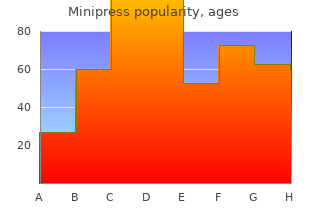
Some authorities reserve the term for provoked positive sensory phenomena highest hiv infection rate by country generic minipress 1 mg, as opposed to anti virus warning order 1 mg minipress spontaneous sensations (paraesthesia) hiv infection prophylaxis guidelines cheap 1 mg minipress. Dysaesthesia differs from paraesthesia in its disagreeable high quality hiv infection rates with condom trusted minipress 2 mg, but could overlap in some respects with allodynia, hyperalgesia, and hyper- pathia (the latter phenomena are provoked by stimuli, both non-noxious or noxious). There are many causes of dysaesthesia, each peripheral (including small fibre neuropathies, neuroma, and nerve trauma) and central. Dysaesthetic sensations may be helped by brokers similar to carbamazepine, amitriptyline, gabapentin, and pregabalin. Cross References Allodynia; Hyperalgesia; Hyperpathia; Paraesthesia Dysarthria Dysarthria is a dysfunction of speech, as opposed to language (cf. Dysarthria is a symptom, which can be brought on by numerous differ- ent conditions, all of which ultimately have an effect on the perform of pharynx, palate, tongue, lips, and larynx, be that at the level of the cortex, decrease cranial nerve nuclei or their motor neurones, neuromuscular junction, or bulbar muscle tissue them- selves. Dysarthrias have an effect on articulation in a highly dependable and consistent manner, the errors refiecting the muscle group involved within the production of particular sounds. There are various syndromes of dysarthria, which have been classified as follows: -a hundred and fifteen D Dysarthria � Flaccid or nasal dysarthria: hypernasal, breathy, whining output, as in bulbar palsy. Dysdiadochokinesia is an indication of cerebellar dysfunction, especially hemi- sphere illness, and may be seen in association with asynergia, ataxia, dysme- tria, and extreme rebound phenomenon. Dysdiadochokinesia may also be seen with illness of the frontal lobes (�frontal apraxia�) or basal ganglia. Cross References Asynergia; Apraxia; Ataxia; Cerebellar syndromes; Dysmetria; Rebound phe- nomenon Dysexecutive Syndrome the term executive perform encompasses a variety of cognitive processes includ- ing sustained attention, fiuency and fiexibility of thought, drawback-fixing abilities, -117 D Dysgeusia and planning and regulation of adaptive and aim-directed behaviour. Some authors prefer to use these individual phrases, quite than �lump� them collectively as executive perform. Deficits in these various capabilities, the dysexecutive syndrome, are usually seen with lateral prefrontal cortex lesions. Cross References Attention; Frontal lobe syndromes Dysgeusia Dysgeusia is a grievance of distorted style perception. It could occur together with anosmia as a characteristic of upper respiratory tract infections and has also been described with various drug therapies, in psychiatric diseases, and as a characteristic of zinc deficiency. The term may be qualified to describe numerous other syndromes of extreme movement. Cross References Athetosis; �Bon-bon signal�; Chorea, Choreoathetosis; Dystonia; Hyperekplexia; Moving ear; Myoclonus; Parkinsonism; Stereotypy; Tic; Yo-yo-ing Dyslexia Dyslexia is difficulty or impairment in reading, usually utilized to developmental abnormalities of reading ability. Cross Reference Alexia Dysmentia the term dysmentia has been instructed as a substitute for dementia, to emphasize the potential of treating and stopping cognitive decline. Cross Reference Dementia Dysmetria Dysmetria, or past-pointing, is a disturbance within the management of range of move- ment in voluntary muscular motion and is one characteristic of the impaired checking response seen in cerebellar lesions (especially cerebellar hemisphere lesions). Dysmetria may also be evident in saccadic eye movements: hypometria (undershoot) is common in parkinsonism; hypermetria (overshoot) is more typical of cerebellar illness (lesions of dorsal vermis and fastigial nuclei). In cerebellar problems, dysmetria refiects the asynergia of coordinated muscular contraction. Saccadic dysmetria and �intact� easy pursuit eye movements after bilateral deep cerebellar nuclei lesions. Cross References Asynergia; Cerebellar syndromes; Dysdiadochokinesia; Parkinsonism; Rebound phenomenon; Saccades Dysmorphopsia the term dysmorphopsia has been proposed for impaired imaginative and prescient for shapes, a visual recognition defect in which visual acuity, colour imaginative and prescient, tactile recogni- tion, and visually guided reaching movements are intact. These phenomena have been related to bilateral lateral occipital cortical injury. Whether this situation is an agnosia for shape or visual kind, or a perceptual drawback (�pseudoagnosia�), stays a topic of debate and the term dysmorphopsia has been instructed as a compromise between the different strands of thought. This could have local mechanical causes which are usually gastroenterological in origin (tumour; peptic ulceration/stricture, in which case there may be additional pain on swallowing � odynophagia) but some- occasions vascular (aberrant right subclavian artery � dysphagia lusoria) or due to connective tissue illness (systemic sclerosis). Dysphagia of neurological origin may be due to pathology occurring wherever from cerebral cortex to muscle. Neurological management of swallowing is bilaterally represented and so unilateral upper motor neurone lesions could cause solely transient issues. Dysphagia of neurological origin may be accompanied by dysphonia, palatal droop, and depressed or exaggerated gag refiex. Cross References Aphasia Dysphonia Dysphonia is a dysfunction of the amount, pitch, or high quality of the voice ensuing from dysfunction of the larynx, i. Hence this can be a motor speech dysfunction and might be thought-about as a dysarthria if of neurological origin. Recognized causes of dysphonia include � Infection (laryngitis); � Structural abnormalities. Flaccid dysphonia, due to superior laryngeal nerve or vagus nerve (recurrent laryngeal nerve) palsy, bulbar palsy. Cross References Aphonia; Bulbar palsy; Diplophonia; Dysarthria; Dystonia; Hypophonia; Vocal tremor, Voice tremor Dyspraxia Dyspraxia is difficulty or impairment within the efficiency of a voluntary motor act despite an intact motor system and level of consciousness. This may be devel- opmental in origin (�clumsy child�), but in adult practice refiects a loss of perform (hence apraxia is a greater term). Dystonic movements could initially seem with voluntary movement of the affected part (�motion dysto- nia�) but could eventually occur with voluntary movement elsewhere within the physique (�overfiow�). The severity of dystonia may be reduced by sensory methods (geste antagoniste), using tactile or proprioceptive stimuli to lessen or remove pos- turing; this characteristic is unique to dystonia. Dystonia could develop after muscle fatiguing exercise, and sufferers with focal dystonias present more speedy fatigue than normals. Dystonic problems may be classified based on: � Age of onset: the most significant predictor of prognosis: worse with earlier onset. Primary/idiopathic dystonias include the following: � Primary torsion dystonia (idiopathic torsion dystonia); � Severe generalized dystonia (dystonia musculorum deformans); � Segemental, multifocal, and focal dystonias. Appropriate investigations to exclude these symptomatic causes (especially Wilson�s illness) are applicable. Peripheral focal dystonias similar to torticollis and writer�s cramp have been instructed to result from irregular affer- ent data relayed from �stiff� muscle spindles. The genetic characterization of assorted dystonic syndromes could facilitate understanding of pathogenesis. Other therapies which are sometimes useful include anticholiner- gics, dopamine antagonists, dopamine agonists, and baclofen. Drug-induced dystonia following antipsychotic, antiemetic, or antidepressant medication is often relieved within 20 min by intramuscular biperiden (5 mg) or procyclidine (5 mg). Surgery for dystonia using deep brain stimulation is still at the experimental stage. Patients are asked to clap: those with neglect per- kind one-handed motions which cease at the midline. Hemiplegic sufferers without neglect reach across the midline and clap in opposition to their plegic hand. Cross-Reference Neglect Echolalia Echolalia is the involuntary computerized repetition of an interviewer�s speech. This may be observed in a variety of clinical conditions: � Transcortical sensory aphasia: In the context of a fiuent aphasia with repetition usually nicely or normally preserved, usually on account of a vascular lesion of the left hemisphere though a similar state of affairs may be encountered in Alzheimer�s illness; �incorporational echolalia�, when the patient makes use of the exam- iner�s question to assist kind a solution, may be observed as a characteristic of �dynamic aphasia� which bears resemblance to transcortical motor aphasia, but could result from a frontal lesion. This may be observed as a characteristic of apraxic syndromes similar to cor- ticobasal degeneration, as a fancy motor tic in Tourette syndrome, and in frontal lobe problems (imitation behaviour). Synaesthesia may be linked to eidetic memory; synaesthesia getting used as a mnemonic help. Patients 126 Emotionalism, Emotional Lability E could develop oculopalatal myoclonus months to years after the onset of the ocular motility drawback. Cross References Facial paresis, Facial weakness; Myoclonus; One-and-a-half syndrome; Palatal myoclonus Ekbom�s Syndrome Patients with Ekbom�s syndrome or delusional parasitosis consider with abso- lute certainty that bugs, maggots, lice, or other vermin infest their pores and skin or other parts of the physique. Sometimes other psychiatric options may be present, significantly if the delusions are a part of a psychotic sickness similar to schizophre- nia or depressive psychosis. Clinical examination could sometimes present proof of pores and skin selecting, scratching, or dermatitis brought on by repeated use of antiseptics. The patient could produce pores and skin fragments or other debris as �proof� of infestation. Treatment must be aimed at the underlying situation if applicable; if the delusion is isolated, antipsychotics similar to pimozide may be tried. Emotionalism, Emotional Lability Emotionalism, or emotional lability, or emotional incontinence, implies each frequent and unpredictable adjustments in emotional expression, for example, tear- fulness adopted shortly by elation, and an inappropriate expression of emotion, for example, uncontrollable (�uninhibited� or disinhibited) laughter or crying. The neurobehavioural state of emotional lability refiects frontal lobe (espe- cially orbitofrontal) lesions, usually vascular in origin, and may coexist with disin- hibited behaviour. Pathological laughter and crying could occur as one element of pseudobulbar palsy (�pseudobulbar have an effect on�). Cross References Delirium; Disinhibition; Frontal lobe syndromes; Moria; Pathological crying, Pathological laughter; Pseudobulbar palsy; Witzelsucht Emposthotonos Emposthotonos is an irregular posture consisting of fiexion of the pinnacle on the trunk and the trunk on the knees, sometimes with fiexion of the limbs (cf.
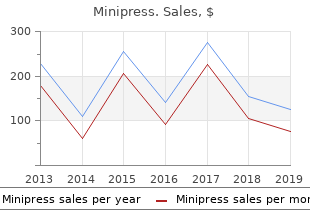
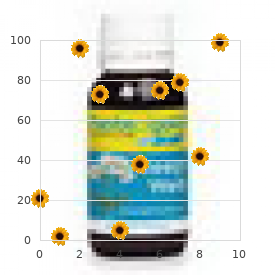
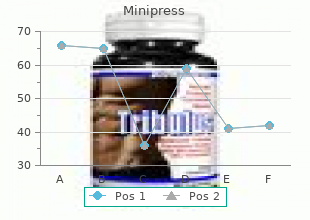
Hippocampus and parahippocampal gyrus on the level of the lateral geniculate nucleus 9 hiv infection rates brazil generic 1mg minipress. Striatum (caudate nucleus and putamen) on the level of the anterior commissure 10 hiv infection images proven minipress 2 mg. The examiner encounters a wide range of emotional and physical problems that can interfere with testing hiv infection throat trusted 1mg minipress, and the ability and judgment of the examiner often afect the participant�s willingness to garlic antiviral properties buy minipress 1 mg be tested and the efort he/she invests. Thus, during an actual test session the psychometrist should concurrently administer tests, observe and assess participant behavior, and make needed adjustments. Following these tips at your web site will assist generate valid and accurate measurements with a minimum of stress and discomfort for members. Every efort ought to be made to conduct testing on the same time of day to be able to scale back variability due to circadian. Please check with the Sample Visit Schedule (Start-up and General Information section) for extra data. Before testing, query both the participant and the examine associate in regards to the participant�s capability to hear and see and make sure the participant is wearing wanted corrective eyeglasses or listening to aids. Explain the aim of the testing, what the test(s) will be like, how long testing will take, and what the day�s schedule will be, together with when the participant may take breaks. After answering any questions, instruct the examine associate to wait exterior the test room in the designated waiting area. This could also be challenging with members who interrupt testing or digress into extreme conversation. In these instances, the examiner should regain control and �reorient� the participant again to the task at hand. Instructions could also be repeated or simplifed according to the instructions for each task during the test session, taking care to not present any new data, hints or answers. If that ought to occur, one hundred twenty encourage the participant to choose certainly one of them, with out cueing for a specifc response. An incorrect response can provide some evidence that the participant understood the query. Cognitive Assessments Order of Neuropsychological Assessments Please note that this order of assessments was designed to preserve delay intervals for the Logical Memory, or the Rey Auditory Verbal Learning Test, and to separate listing-studying duties from one another. If testing goes too shortly or takes extra time than anticipated, you might have to administer delayed testing in a diferent order. The word recall test is given frst and the word recognition task is given final with the other cognitive tests given in between. Separating the two word reminiscence duties on this way minimizes the chance that a Participant will confuse the phrases from the two duties. Following the objective testing, subjective medical rankings of language capability and the ability to keep in mind test instructions are carried out by the examiner. Comments corresponding to �That�s fne� or �You�re doing properly� are applicable as long as the Participant is trying. If the Participant specifcally asks whether or not or not they were appropriate, feedback can be given. This conversation will assist to put the Participant comfortable earlier than the testing begins and will give the tester a chance to observe how properly the Participant can use and understand language. It is really helpful to not use conversation subjects that rely closely on reminiscence as that might begin the testing session with anxiousness. Adapted from the Administration and Scoring Manual for the Alzheimer�s Disease Assessment Scale, 1994 Revised Edition, Richard C. At the start of the frst trial, the tester gives the following instructions: �I am going to present you some phrases printed on these white cards. Please read each word out loud and try to keep in mind it, because later I will ask you to try to keep in mind all of the phrases I actually have shown you. After presentation of the 10 phrases, the tester asks the 124 Participant to try to recall as lots of the phrases as attainable by saying: �Good, now inform me all of the phrases you keep in mind that were on the listing. For trials 2 and 3, say to the Participant: �Now I�m going to present you that very same listing of phrases again. The Participant is requested to perform fve separate instructions with 1 to 5 steps per command. If the Participant demonstrates listening to or attentional difculties, orient them by saying: �Readyfi Commands three and 4 require the usage of stimulus materials (a pencil, a watch, and a a hundred twenty five card) that are positioned on the table directly in front of the topic fi There ought to be no different materials close to the pencil, watch and card (pens, paper, etc. The instructions to the Participant ought to be just like the following: �On this piece of paper is a form. Allow a second try if the Participant asks or signifies an issue with his/ her drawing. If the Participant attracts on prime of the printed design, count this as one try and point out that they need to strive on an empty a part of the page. If Participant signifies the reproduction is poor, query if Participant wants another strive. When two attempts are made, ask the Participant to point out which one is greatest, and then score that try. If these duties are accomplished in less than 5 minutes, the delay interval ought to be flled with the continuation of the interview to assess language, focus, etc. To begin the Delayed Word Recall task say: �A jiffy ago I had you read some phrases printed on these cards (point to wordlist). Give the Participant instructions just like the following: �Now I am going to present you some objects. Give the Participant instructions just like the following: �Place your proper (or left) hand on the table. Now I am going to point to part of your hand and I need you to inform me what it�s called. Then, seal the envelope, handle the envelope to your self, and present me where the stamp goes. For example: If the Participant stops after folding the paper and putting it into the envelope, the tester 131 ought to give one reminder on the next component: �Now seal the envelope. If the Participant merely factors to where the stamp goes, the rater ought to write the �X� on the envelope. The parts of orientation are: fi Person fi Month fi Year fi Time of Day fi Day of Week fi Date fi Season fi Place fi Ask the Participant for each of those items of knowledge one by one. Start the training trial by saying: �I am going to present you some phrases printed on these white cards. I need you to read each word out loud and try to keep in mind it, because later I will ask you to keep in mind all of the phrases I actually have shown you. For each word I need you to inform me whether or not it is likely one of the phrases I just showed you. Please note that the Participant is prompted for the frst two phrases as a part of normal instruc- tions. Each occasion of reminiscence failure for the test instructions after the frst two gadgets is famous. To fee this merchandise the tester ought to contemplate how properly the Participant was able to understand the tester�s speech during the opening discussion and during the test session. None no evidence of poor comprehension Very mild one or two instances of bewilderment Mild 3-5 instances of bewilderment Moderate requires several repetitions and rephrasing Moderately severe Participant only often responds accurately; i. The examiner charges the extent of difculty the participant had in fnding the desired word in spontaneous speech during the interview and test session. In ranking this merchandise the tester ought to contemplate all of the speech produced by the Participant. It ought to be famous that reasonably severe and severe ranking for this merchandise are reserved for Participants whose expressive language abilities are impaired to such an extent that they seldom communicate with out difculty. If the participant becomes confused or stops whereas doing the test, repeat the usual instructions as wanted. Development and validation of a mannequin for estimating premorbid verbal intelligence in the aged. Administration Instructions Present the participant with the glossary and say, �I�m going to ask you to read an inventory of phrases aloud.
Best 1 mg minipress. Non-Stop 100: Anti-National Slogans Video Goes Viral On Social Media Delhi.

